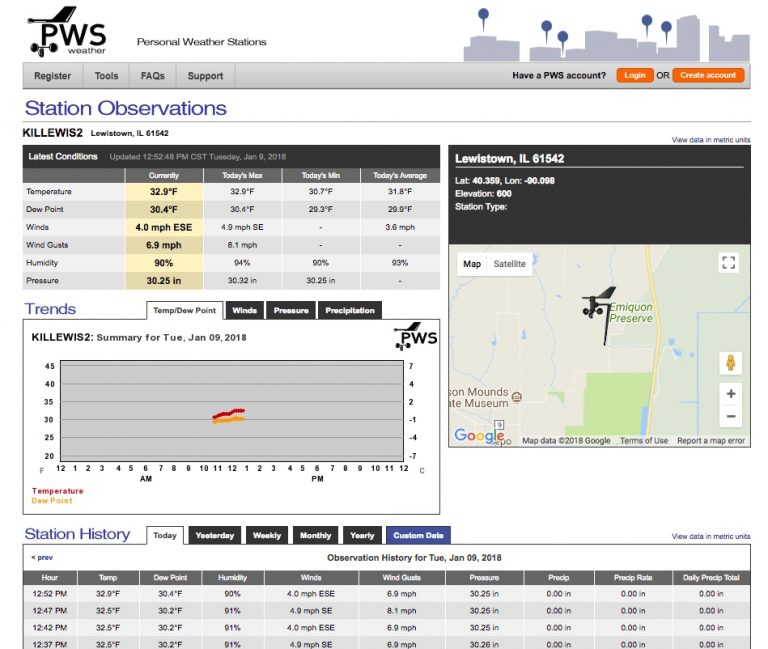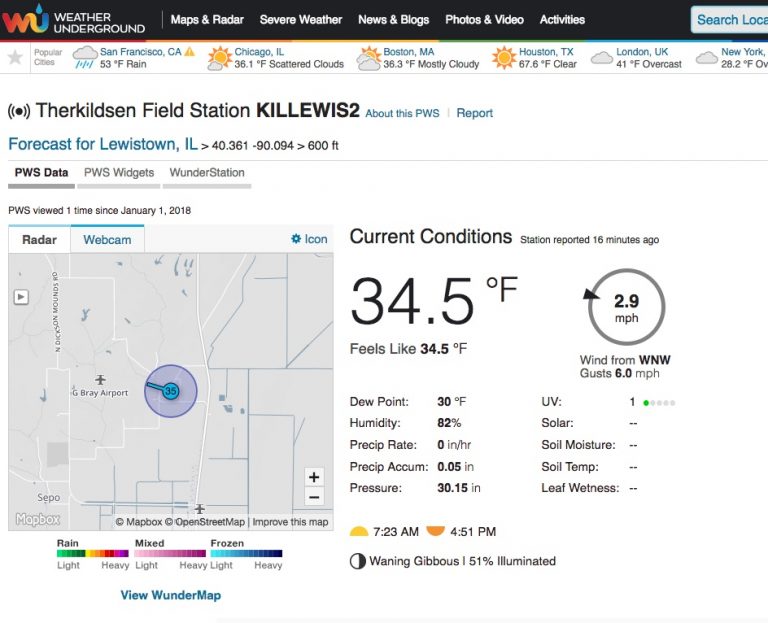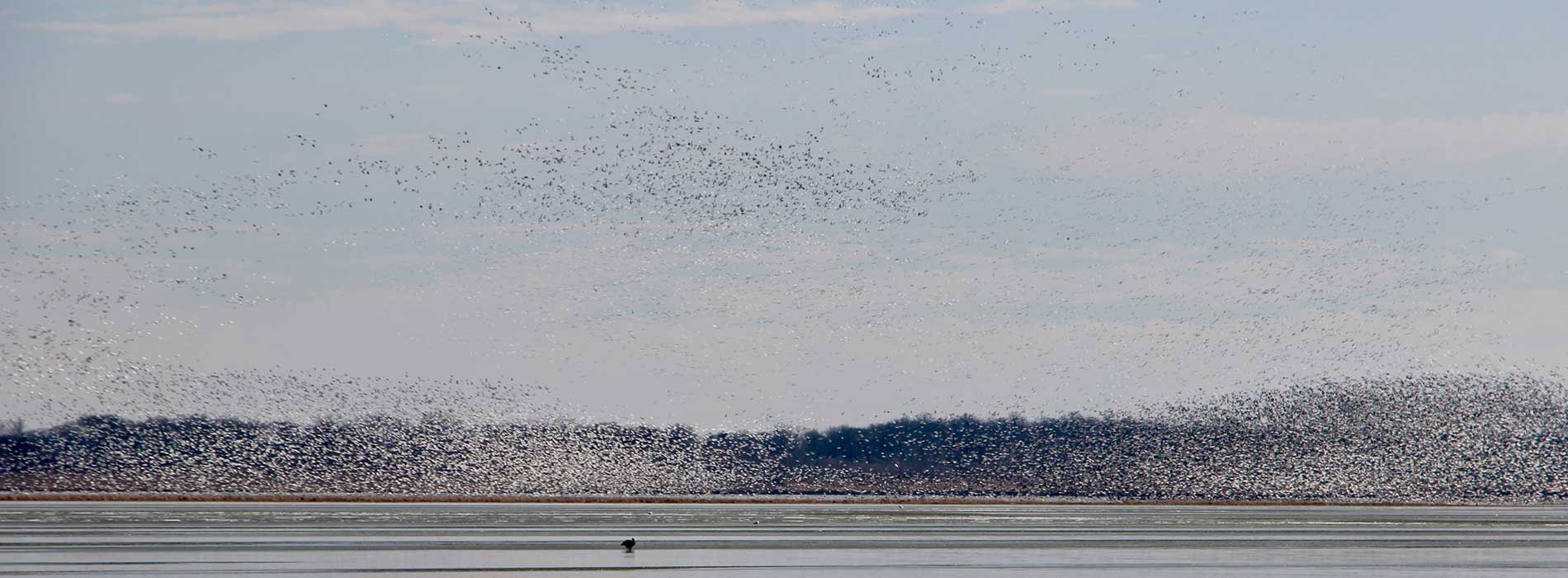Our weather station is set-up and operational. Current Conditions can be viewed on either our PWS Weather page or our Weather Underground page.
Making sense of the weather display
For both sites, current conditions are displayed at the top of the page. If you scroll down you can find historic data. You can interact with the webpage and change the summary data and plots to reflect different time periods (daily, weekly, monthly, or yearly).
Temperature, precipitation, and wind measures (direction, speed, gusts) are all pretty straight forward. But what about humidity, dew point, and pressure?

- Humidity: When dealing with weather, humidity refers to the amount of moisture in the air compared to what the air can hold. The warmer it is, the more water the air can hold.
- Dew point: The dew point is the temperature at which water vapor in the air condenses (changes from gas to water).
- Pressure: Basic rule of thumb, if the pressure is increasing overtime (hours to days) the weather is getting better (calmer, sunnier); if it is falling, the weather is getting worse (colder, windier, wetter).

Weather and Climate
Weather and Climate are often used interchangeably, but definitely should not be. The major difference is the amount of time being considered by each. Weather is short-time scales: hour-to-hour, day-to-day, month-to-month, and even year-to-year. Climate is long-term: think in terms of decades, with 30 years or more generally being what is considered when talking about climate.
To put in terms of a baseball player: a game is weather; a season is weather; a career is climate. Evaluating Ted Williams' career by his performance on May 14, 1941 (0-5, one strikeout), would be a mistake. Just as it would be a mistake to use a hand full of unusual days to describe climate.
